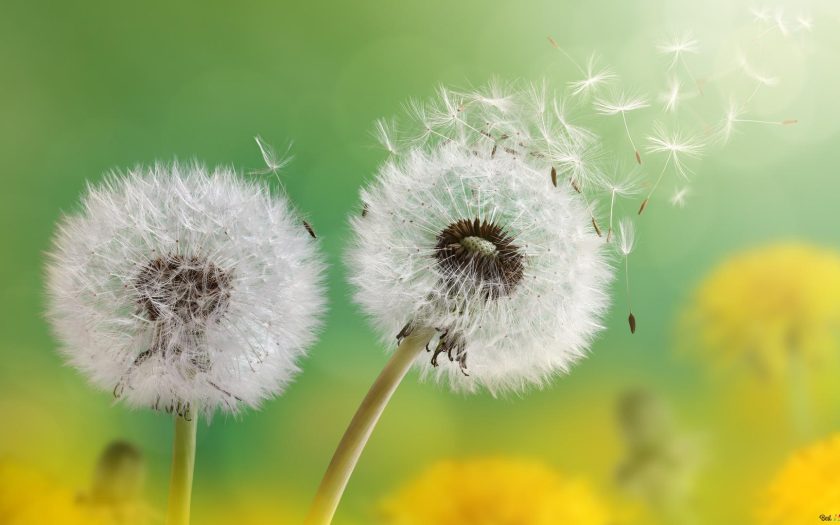-
Hazel (Corylus).
Hazel is one of the first plants to wake up after winter, signaling the arrival of spring with its beautiful blooming. Its catkin-like flowers appear before the leaves unfold, actively releasing pollen that spreads over long distances with the wind. The pollen of this tree contains strong allergens that can trigger classic seasonal allergy symptoms such as sneezing, nasal itching, congestion, watery eyes and even asthma-like reactions. It is especially dangerous because the flowering of this tree begins in early spring, when the immune system is still weakened after winter. To avoid unpleasant symptoms during hazel’s flowering season, it is best to limit time spent near these trees and stayed indoors on windy days whenever possible. Additionally, people sensitive to hazel pollen should be cautious with consuming nuts, especially hazelnuts, as they can cause cross-allergic reactions.
-
Loboda.
Loboda is a widespread plant that can be found in fields, roadsides, gardens, and even in cities. This plant usually blooms in mid- to late spring, and its pollen is one of the strongest allergens. Due to the small size of its pollen particles, they are easily carried by the wind over long distances, penetrating the respiratory system. This can trigger various allergy symptoms, and in some cases, even worsen bronchial asthma. To reduce the risk of allergic reactions, it is advisable to avoid walking in fields or areas where this plant grows in large quantities during its peak blooming period. If you know that there are many areas in your area where this plant blooms, wash your hands, face and change your clothes after being outside to reduce the risk of increased unpleasant symptoms.
-
Dandelion.
These beautiful yellow flowers create a real spring mood, but for allergy sufferers, this plant can cause unpleasant symptoms. Their pollen spreads actively through the air, especially on windy days and can contribute to allergic reactions. Another risk factoring for allergy sufferers is dandelion fluff, which appears after flowering. This fluff is easily carried by the wind and can significantly irritate the mucous membranes of the respiratory system. Avoiding walks in areas of massive dandelion bloom, especially in the morning and in dry weather, will help reduce the risk of unpleasant symptoms. Wearing sunglasses will protect your eyes from contact with pollen, and regular nasal rinsing after being outside will reduce exposure to allergens.
-
Alfalfa (Medicago sativa).
Alfalfa is an herbaceous plant widely used as animal feed, in herbal medicine, and even in cooking. It is rich in vitamins, minerals, and antioxidants, making it a valuable addition to a healthy diet. However, despite its many benefits, alfalfa can trigger allergies in sensitive individuals. Most often, allergic reactions to alfalfa occur due to its pollen, which spreads actively during the spring and summer seasons. Allergies can also occur when eating alfalfa products, such as sprouted sprouts used in salads and smoothies. For example, some people may experience itchy mouths, rashes, or even gastrointestinal distress after consuming it. If you are sensitive to this plant’s pollen, it is best to avoid alfalfa-containing products and stay away from areas where the plant grows in large quantities.
-
Mimosa (Acacia dealbata).
Mimosa is one of the most well-known spring plants, symbolizing warmth, celebrations, and joy. Delicate yellow inflorescences attract the eye, and a pleasant aroma fills the air with a sense of freshness. However, the flowers of the mimosa are not as safe as they may seem at first glance, as they can be a strong allergen for people with heightened sensitivity. Individuals suffering from hay fever or bronchial asthma may experience worsened symptoms and breathing difficulties upon exposure to mimosa pollen. Additionally, an allergic reaction can occur simply from touching the flowers. Some people report redness, itching, or skin rashes after direct contact with this plant. If you are prone to allergies, it is best to avoid prolonged exposure to blooming mimosa and refrain from keeping bouquets of it at home. If contact with the plant occurs, washing your face and hands, changing clothes, and, in case of severe symptoms, consulting a doctor is advisable. Also you may need certain medications (such as Allegra, Atarax) and sprays (such as Alanase Nasal Spray) that will help alleviate the discomfort.
-
Freesia.
Freesia is often used in bouquets, floral arrangements, and even perfumery due to its light, slightly citrusy fragrance. However, some individuals are highly sensitive to the scent of freesia. Prolonged exposure to these flowers may cause headaches, dizziness, or even nausea. In perfumery, freesia essential oils are commonly incorporated into fragrances, which can also trigger contact or respiratory allergies. If you receive a bouquet containing freesia and start experiencing discomfort, it is best to place it on an open balcony or in another room. Additionally, paying close attention to your health and undergoing an allergy test can help identify specific allergens, allowing you to minimize their impact on your daily life.

